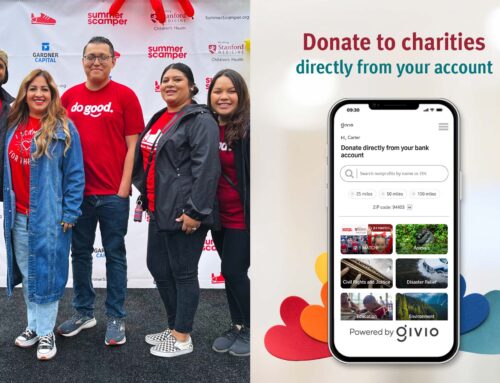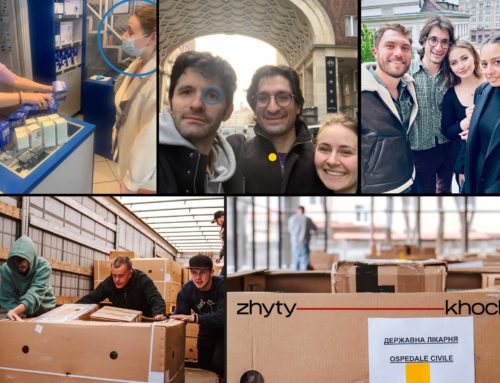Part 3 of Our 4-part Series: Workplace Giving and Crowdfunding
Part 3. Workplace giving raises $5 Billion a year for charity. Yet sadly, that falls way short of the potential. In this four-part series, I am taking a deep dive into workplace giving. The numbers. The opportunities. What do nonprofits need to know, as well as companies? Most importantly, I am explaining why and how crowdfunding is the solution to fulfilling workplace donor expectations and revitalizing workplace giving.
In Part 2, we focused on donor expectations, especially younger generations like Millennials and Gen Z. Now in Part 3, we jump into crowdfunding and why it represents a powerful opportunity for workplace giving. And I will use examples from Givio to help make my points.
What does the workplace look like?
The US workforce is telling us everything we need to know to engage. In the US, we have roughly 18 million businesses and 80 thousand governmental entities that employ 150 million people. While we remain in an unprecedented set of circumstances due to COVID, we are bouncing back. The vast majority of businesses employ fewer than 500 people. Small business accounts for two-thirds of our annual job growth. It is well documented that today’s workers change jobs more frequently than past generations. And a recent survey conducted by Gallup and Quickbooks points to significant growth in self-employed workers.
Don’t forget that important stat from Part 1: people who give through the workplace tend to give more, as much as $500 – $700 annually.
We are a workforce in flux, with far more of us working at smaller companies, and many more working for ourselves than ever before. If we do not or cannot “sit still and work our careers” like we used to, then what is the best way to engage us to participate, to give? After all, people are generous, even in difficult times. We want to contribute and solve problems. We want to help our neighbors and strengthen our communities.
A workplace giving action plan requires the right software
We cannot execute a workplace giving action plan designed for today’s workers if we do not deliver on that plan using the right technologies. In other words, the medium through which we deliver the message has to be as effective as the message itself.
Givio, for example, is the type of medium required. Givio is a crowdfunding platform designed for today’s workplace. In fact, Givio does more than help donors and companies run campaigns for favorite charities – Givio enables every nonprofit access the workplace, too. To help solve the problems faced by charitable giving (see Part 1) and meet today’s donor expectations (Part 2), we need more solutions that “speak to the needs of the donor”.
We built Givio to engage younger donors – and remember, the workforce is young – on their terms. Givio is a free app available in your favorite app store. Anyone can use it to give to more than 1.5M charities, schools and Native American tribes in the country. Giving pages are pre-built. Orgs are vetted. It is so simple to give – anyone can create a fundraising campaign in less than 2 minutes. Share it over social media, email, text. Even better, Givio campaigns work inside of Slack. So turn a Slack channel into a “My Company Cares” channel and encourage the generosity of your employees.
What’s so different about Givio?
Well, for starters, Givio is designed for the donor. And by extension, for the businesses, charities and organizations that function with simplicity and efficiency. No contracts, no software implementations. With modern payment methods that younger donors want. Just rally around a cause and give.
The medium through which we deliver the message has to be as effective as the message itself.
That “designed for donors” part may give a lot of nonprofits pause. I understand. Decades of consultants, enterprise software and big tech platforms have put a premium on data mining. But ask yourself:
Do donors ever value being the targets of data mining? Is being mined high on their priority list of expectations when they give?
So please hold any reservations and keep reading. Remember those 3 keys to fundraising from Part 1: fundraising key #3 is also really important (capture the gift when the connection is made).
Corporate engagement made simple
Let’s think about the needs of the small or mid-sized business. We know that 90% or more give back to their communities. But most do not have the time, the budget or the energy to implement complicated software “just to do something good.” For a company, Givio is the antithesis of enterprise software.
Givio can support both corporate initiated giving programs and organic ones, initiated by employees. When coupled with a Slack channel, Givio is an instant CSR platform ready to go … able to be used many times throughout the year when you want to do something good. Givio makes your workplace giving action plan much easier to execute.
Nonprofits need a workplace giving action plan
Every nonprofit that I have ever worked with wants to reach new donors and find corporate sponsors. Those partnerships are essential to service stability and revenue growth. Unfortunately, it is too common to find nonprofits asking their corporate board members for donations and nothing more. Opportunities are being missed.
Instead of asking board members and key volunteers to give, ask them to help you extend your fundraising reach by running a crowdfunding campaign that benefits the charity. By leveraging their networks of customers, suppliers, employees or neighbors – “spheres of influence” – your corporate and volunteer leadership can do more than just make a donation to your charity this year. They can rally a team of givers who turn 1 gift into 10 … or 100 … or more.
None of this is possible, by the way, if everyone involved has to spend a lot of time and effort fiddling with software. Do you remember how easy it used to be to give? Someone asked and you wrote a check. That was it. Now, we have taken away the checkbooks, and we put websites, lengthy forms and passwords in front of someone every time we want them to give. Ugh!
Lastly, fundraising over social media can be effective. Creating a campaign in your Facebook account might be a good idea. But as users become increasingly concerned about how Big Tech monetizes personal data, you could get caught up in the blowback. And wouldn’t it be easier to create a crowdfunding campaign that can be shared across all of your social media accounts, not just one? Can you hear that workplace giving action plan forming in your brain? Help is coming.
United Ways can help
Most of us in the charitable giving industry have followed United Way’s journey from “one campaign in the workplace” to “community problem solver”. As their mission has evolved, one thing remains clear: 1,200 United Ways in the US are still critically important to local community fundraising. And they do this work in partnership with local business.
So my message to United Ways is to help your member agencies understand the needs of your local businesses and their employees. Find mobile software that works for everybody. Simple. Efficient. Actionable. And then help your local nonprofits to engage with local businesses. Become the expert in what businesses – and their employee-donors – want, not just what you need.
A simple plan for action
This does not have to be complicated. Here are some guidelines:
- Plan activities that engage the (younger) workforce on their terms. Don’t know what they want? Ask them.
- Empower workers to create and promote localized giving campaigns.
- Proactively promote matching gifts. Companies, increase those matching budgets and ease back on the rules. Nonprofits, seek out a local business to sponsor a campaign with a match. Connect with Double the Donation to find more matching gifts.
- Use mobile software that makes giving easy. If you don’t understand new, emerging giving apps and platforms, find someone who does.
- Make sure there are payment methods younger people recognize and want to use.
- Let people give anonymously.
- Use social networks.
- Leverage spheres of influence. If I give to your charity, good. If I sponsor a fundraiser among my friends, co-workers or customers, great!
- Thank but don’t spam.
- And above all, treat donors as people, not data.
Giving is like democracy: more giving (voting) is a good thing!
By setting aside forms and registrations, we can engage more and younger donors on their terms. From there, we begin to develop relationships that can last a lifetime.
Next up: Part 4: Capturing Donations in the Moment
(and I’m going to circle back to the question of workplace giving leadership that I raised in Part 1)




